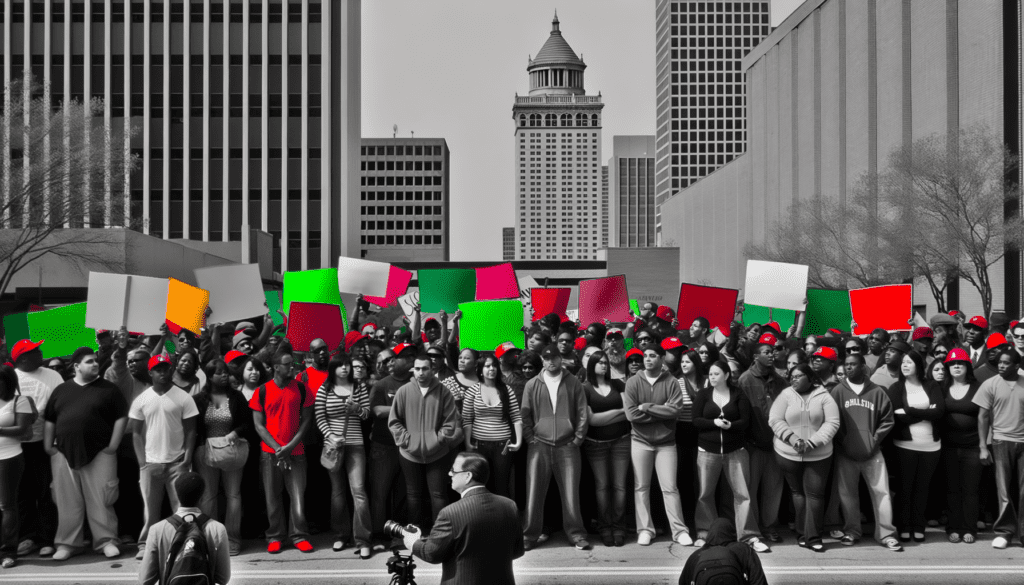A Call to Action Echoes Across the Nation
Hundreds poured out into the streets from Washington, D.C. to San Diego, in protest of sweeping staff reductions in key federal agencies announced by the Trump Administration. Most strikingly impacted—the Department of Education and the Department of Veterans Affairs, with job losses numbering in the tens of thousands. These cuts have sparked visible outrage and deep concern across communities nationwide, dedicated to supporting education and veterans, two cornerstones of a thriving democracy.
The Department of Education faces a nearly 50% reduction in its workforce, totaling 1,300 job losses. Education Secretary Linda McMahon’s troubling acknowledgment that these layoffs are ‘just the beginning’ of further agency cuts signals potentially devastating impacts on our nation’s public schooling and student resources. Opponents fear such drastic decisions spell disaster for special education, teacher salaries, after-school programs, student transportation, and other support essentials, fundamentally undermining access to quality education for millions.
The Human Cost on America’s Education System
The fear and frustration culminated in a vibrant ‘honk-a-thon’ protest that rippled through the streets of Washington, D.C.—a powerful reminder of ordinary citizens’ resistance against policies perceived as undermining public education. Demonstrators like Senator Mazie Hirono emphasized how these layoffs risk stripping children, particularly those from disadvantaged backgrounds, of crucial educational opportunities, setting back educational equity gains made over the decades.
Simultaneously, educators, parents, and students rallied passionately in San Diego, where California Federation of Teachers President Jeff Freitas implored the administration: ‘Stop creating chaos, stop hurting all of our communities, stop hurting workers and our students and our kids in our country.’ The emotional intensity underscored how fundamental a robust, inclusive education system is to communities across the country.
Veterans Face Harsh Cuts Amid Rising Concerns
Compounding the grievances, the Department of Veterans Affairs plans to reduce its workforce by drastically trimming over 80,000 positions—a staggering 17% of the department’s employees. Veterans and advocates gathering at Balboa Park in San Diego spoke urgently against these cuts. Despite assurances from VA Secretary Doug Collins that these cutbacks will not affect direct veterans’ benefits or healthcare services, communities remain deeply skeptical. After all, fewer staff inevitably leads to delayed services, longer waits, and decreased personal attention—all outcomes that veterans who’ve honorably served our nation simply don’t deserve.
The Broader Agenda and What’s at Stake
President Trump has openly expressed his desire to eliminate the Department of Education, dismissively labeling it as a “big con job.” Such rhetoric, combined with proactive dismantlement of department infrastructure, suggests a broader ideological campaign aiming to decentralize and potentially privatize public education more completely. This attitude and the resultant policy moves ignore the vital role that federally supported education systems play in ensuring educational equity, social cohesion, and collective prosperity.
At its core, this combativeness highlights a clash of visions—one where public resources broadly support community well-being, versus a narrow approach that risks privatizing and dismantling the structures fostering equality. Critics have raised concerns that such measures could disproportionately harm students from economically disadvantaged communities, exacerbating existing disparities and infringing significantly on children’s rights to quality education.
Resilience, Optimism, and the Fight Ahead
Despite these challenges, the protests have underscored a powerful spirit of solidarity and resilience within communities. Activists are not simply demanding a reversal of these damaging cuts—they advocate for a visionary rethinking of the federal government’s role in education and veteran support services. Katherine Lalonde of the Butler County Democratic Committee captured this sentiment by suggesting that, rather than naively axing critical federal infrastructure, policymakers must instead thoughtfully restructure these departments with an explicitly progressive vision: one centered around accessibility, equity, and communal responsibility.
Though the immediate circumstances are undeniably troubling, these passionate protests have revealed the vibrancy of civic engagement and a united commitment to constructive change. They underscore a broader societal understanding that education and veteran affairs are foundational to a compassionate, equitable democracy.
In short, these communities aren’t merely fighting against specific job cuts—they’re advocating in earnest for broader, deeply-held American values of diversity, equality, and justice. Their message is clear: Decision-makers in Washington must recognize the human consequences of policy and choose progress towards a more inclusive and equitable future, rather than regressing into division and inequality.

